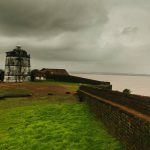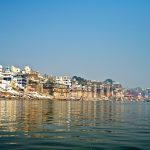Phyang Monastery: A Majestic Marvel Beyond the Himalayas
Phyang Monastery is a captivating stop on many Ladakh tour packages, offering a unique contrast to the vibrant cultural experiences in Ladakh.
The Phyang Monastery symbolizes spiritual comfort, tucked away amid the wild beauty of the Himalayas. Travelers from all over the world seeking a closer relationship with God or themselves are drawn to this place by its tranquil atmosphere and rich cultural history.
In this article, we delve into the history, significance, and attractions surrounding Phyang Monastery, guiding you through an unforgettable journey of exploration and enlightenment that cannot be found in other monasteries in Ladakh.
History of the Phyang Monastery
History of the Phyang Monastery
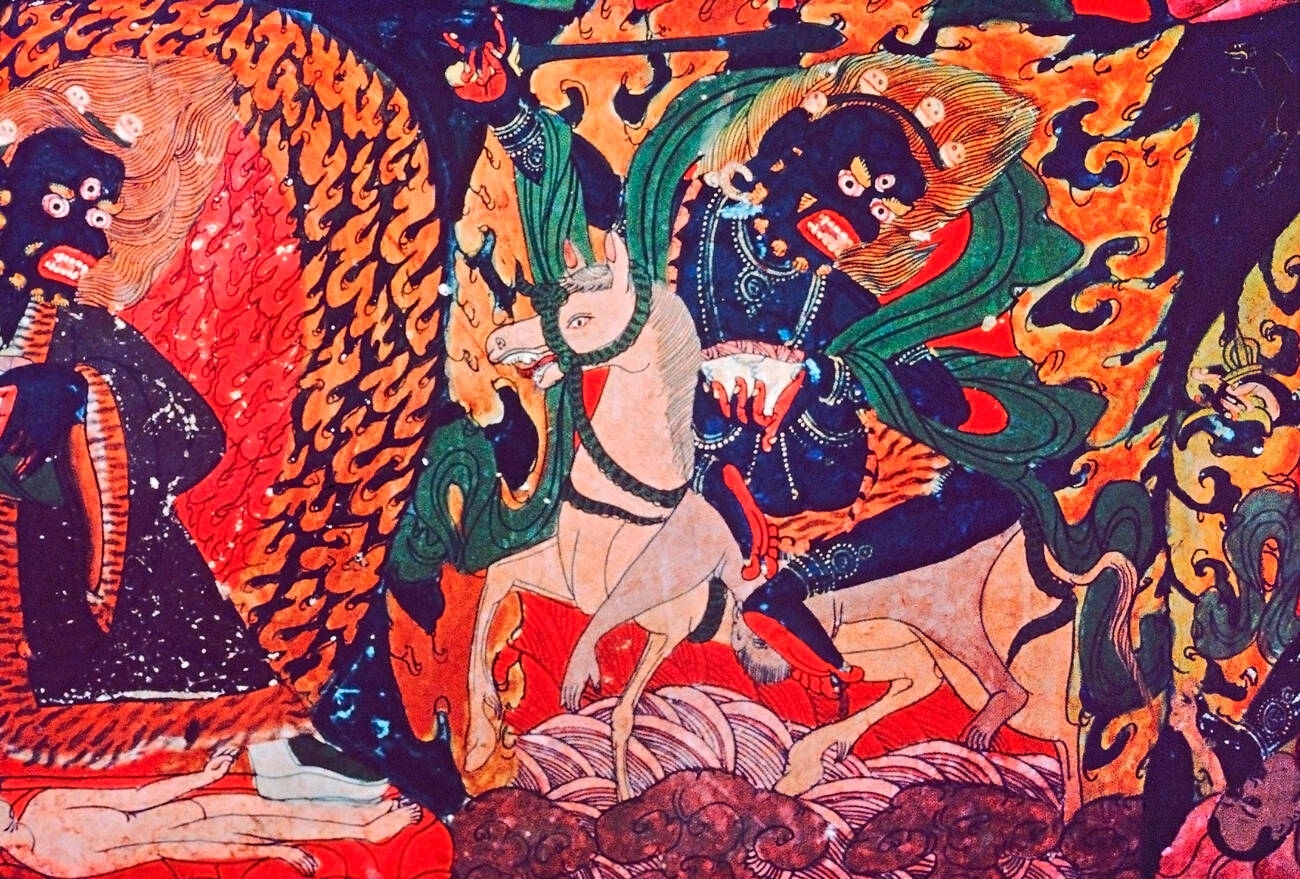
The esteemed Tashi Namgyal founded Phyang Monastery in the early 16th century, which is when its origins may be found.
It has been a hub for Buddhist study and meditation for centuries, supporting a community of monks committed to preserving and promoting the Buddha’s teachings.
The monastery’s colorful murals and finely carved exterior, which depict stories of devotion and enlightenment, complement its design, which combines Ladakhi and Tibetan architectural elements.
Places to Visit Near Phyang Monastery:
Places to Visit Near Phyang Monastery
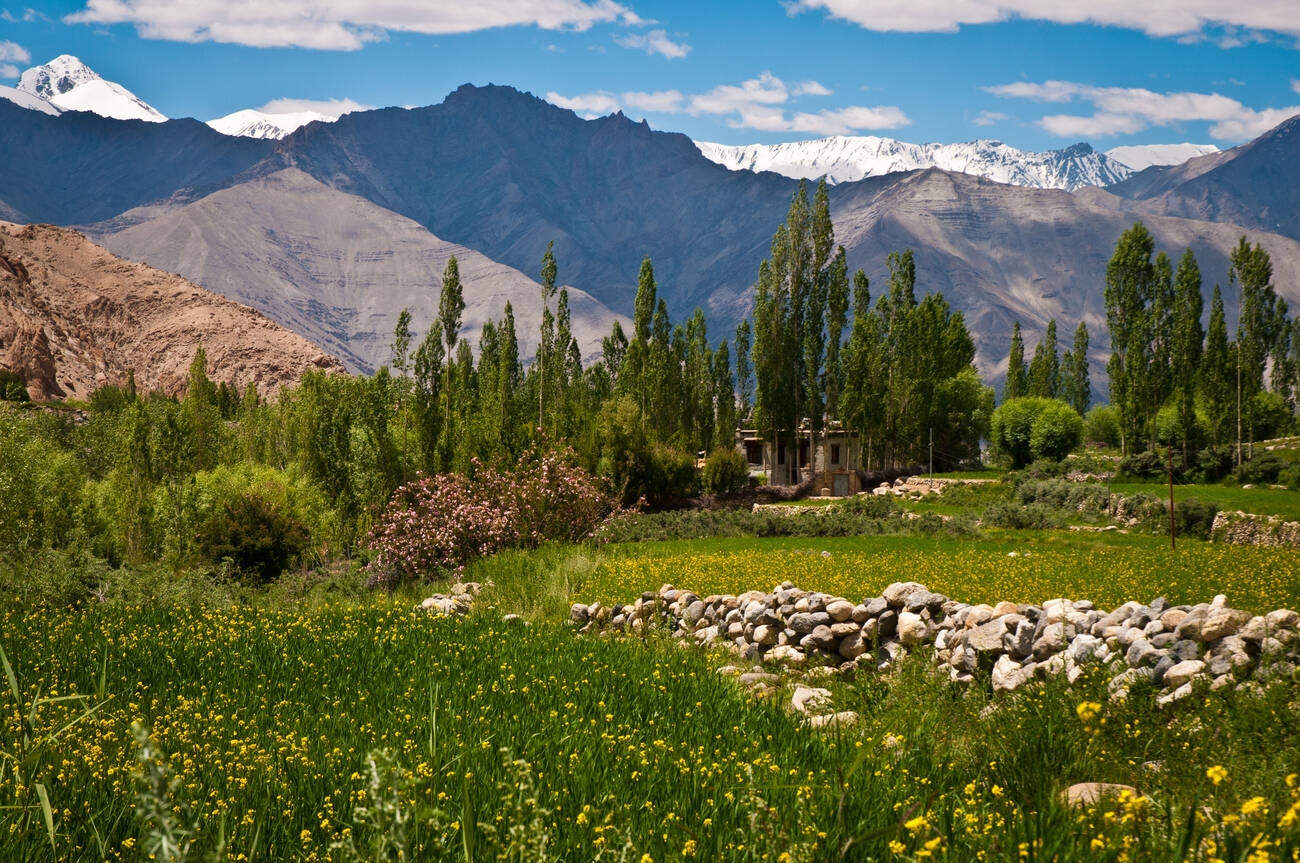
Hemis Monastery: A short drive from Phyang, Hemis Monastery is one of the largest and wealthiest monasteries in Ladakh, renowned for its annual Hemis Festival celebrating the birth anniversary of Guru Padmasambhava.
Thiksey Monastery: Perched atop a hill overlooking the Indus Valley, Thiksey Monastery is famous for its resemblance to the Potala Palace in Lhasa, Tibet. Visitors can explore its numerous temples, stupas, and a massive statue of Maitreya Buddha.
Shey Palace: Once the summer retreat of the Ladakhi kings, Shey Palace is known for its picturesque location and a towering golden statue of Buddha Shakyamuni, visible from miles around.
Stok Palace: Home to the royal family of Ladakh, Stok Palace offers a glimpse into the region’s regal past with its museum showcasing artifacts, thangkas, and royal attire.
Best Time to Visit Phyang Monastery
Best Time to Visit Phyang Monastery
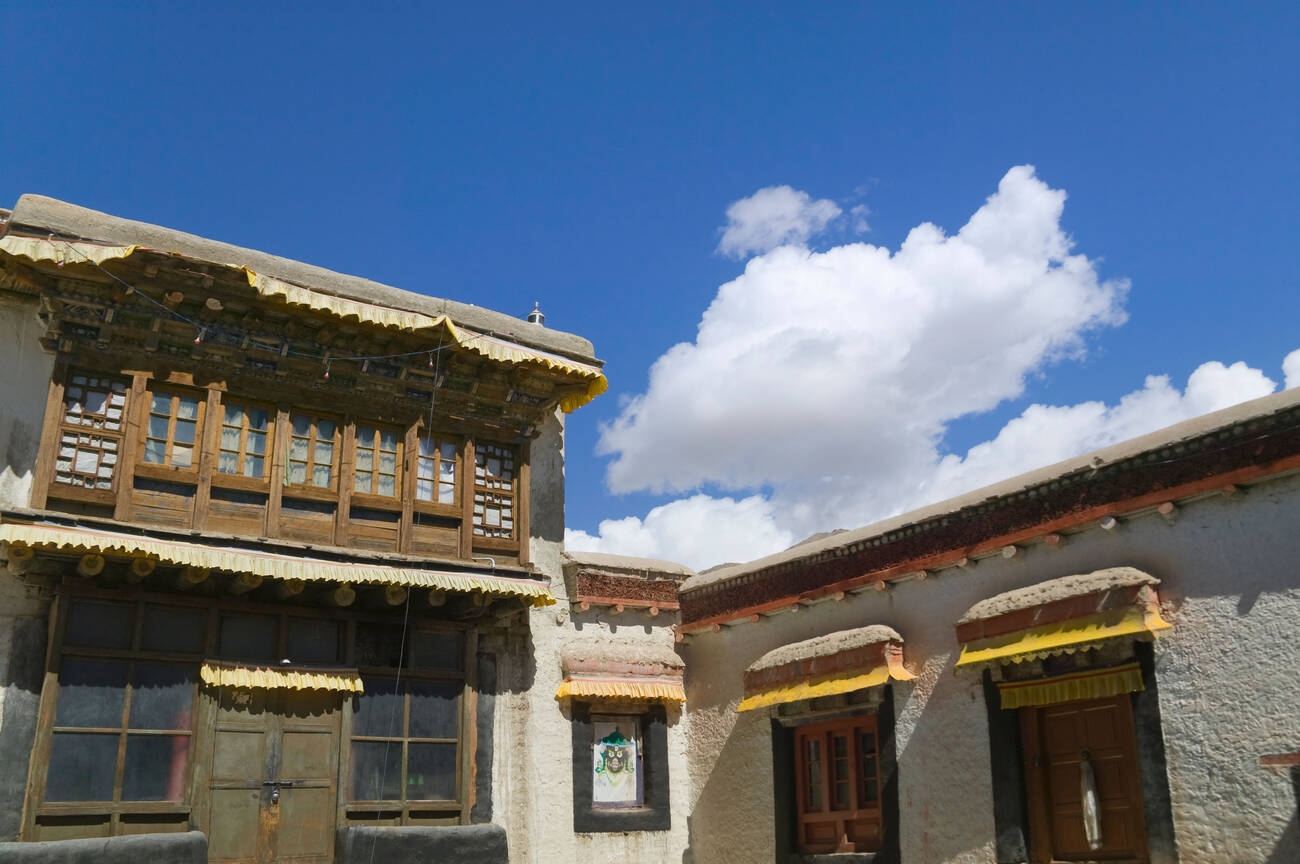
The best time to visit Phyang Monastery and its surroundings is during the summer months, from June to September when the weather is mild and favorable for outdoor activities.
During this time, the region blooms with vibrant colors, and festivals such as the Hemis Festival offer a glimpse into the rich cultural heritage of Ladakh and is one of the best places to visit in Ladakh in summer.
How to Reach Phyang Monastery:
Phyang Monastery is located approximately 15 kilometers west of Leh, the capital of Ladakh. The most convenient way to reach Leh is by air, with regular flights operating from major cities like Delhi, Mumbai, and Srinagar.
From Leh, visitors can hire taxis or take local buses to reach Phyang Monastery, enjoying breathtaking views of the surrounding landscapes along the way.
Things To Do Near Phyang Monastery:
Meditation Retreats: Immerse yourself in the serene ambiance of Phyang Monastery by participating in meditation retreats led by experienced monks, offering an opportunity for inner peace and self-discovery.
Trekking and Hiking: Embark on exhilarating trekking adventures in the nearby mountains, with trails leading to remote villages, high-altitude lakes, and panoramic viewpoints offering mesmerizing vistas of the Himalayas.
Cultural Immersion: Engage with the local community and learn about Ladakhi culture and traditions through homestay experiences, where you can savor authentic cuisine, participate in folk dances, and interact with artisans practicing age-old crafts.
Photography Expeditions: Capture the ethereal beauty of Ladakh’s landscapes through photography expeditions, exploring remote valleys, ancient monasteries, and nomadic settlements nestled amidst towering peaks.
Phyang Monastery Festival
Phyang Monastery Festival:
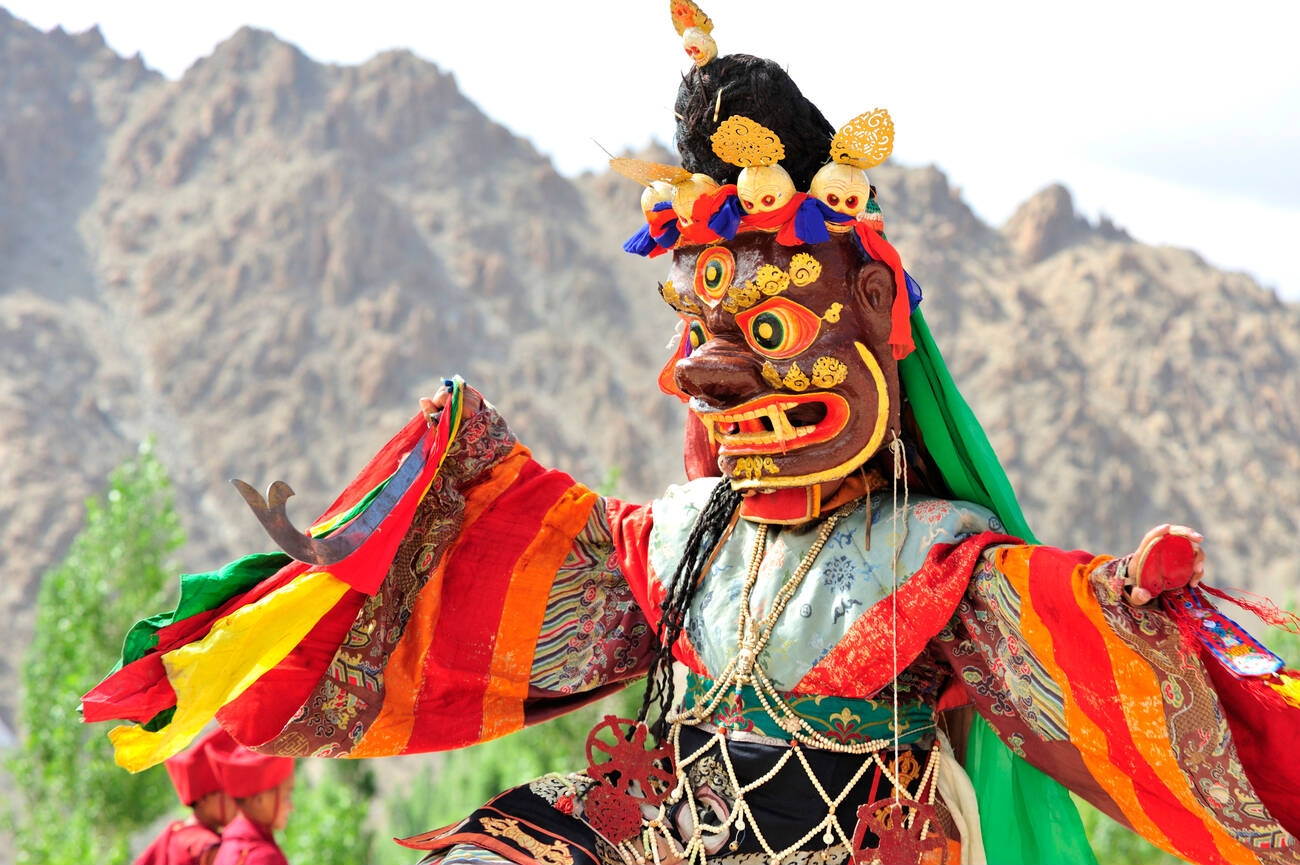
One of the most anticipated events in Ladakh’s cultural calendar is the annual Phyang Tserup Festival, celebrated with great fervor at Phyang Monastery.
The festival typically falls in the summer months and features vibrant masked dances, traditional music performances, and ceremonial rituals, attracting pilgrims and tourists alike from across the region.
It is a time of joyous celebration and spiritual renewal, offering visitors a unique opportunity to witness the rich cultural heritage of Ladakh come alive in plenty of colors and sounds.
Cultural Significance:
Delve into the vibrant cultural tapestry woven within the walls of Phyang Monastery, where age-old traditions continue to thrive in the modern world.
Discover the significance of rituals, ceremonies, and festivals in preserving Ladakhi heritage and encouraging a sense of community among monks and devotees.
Monastic Life:
Gain insight into the daily routines and spiritual practices of the monks who call Phyang Monastery home. From early morning prayers to intricate rituals performed throughout the day, explore the disciplined yet enriching lifestyle embraced by the monastic community as they strive for enlightenment and inner peace.
Sustaining the Environment:
Discover Phyang Monastery’s commitment to environmental conservation and sustainable living practices.
From water harvesting techniques to eco-friendly initiatives, explore how the monastery is striving to protect the pristine beauty of its natural surroundings and promote ecological awareness among visitors and locals alike. Phyang Monastery and its surroundings offer a haven of tranquility and spiritual rejuvenation amidst the gorgeous landscapes of Ladakh.
Whether you seek to delve into the region’s rich history, immerse yourself in its vibrant culture, or simply bask in the serenity of its natural beauty, a visit to Phyang Monastery promises an unforgettable journey of discovery and enlightenment.
What is the history of Phyang Gompa?
Phyang Monastery, or Phyang Gompa, was founded in the early 16th century by Tashi Namgyal, a prince of Ladakh, as a Red Hat sect monastery. It later became a prominent center of the Drikung Kagyu tradition of Tibetan Buddhism.
What are the opening hours of Phyang Monastery?
The opening hours of Phyang Monastery typically vary depending on the season and specific monastery guidelines. However, in general, Phyang Monastery opens its doors to visitors in the morning around 7 or 8 AM, and remains accessible until early evening, usually around 6 or 7 PM.
Are there any nearby attractions to visit along with Phyang Monastery?
Yes, there are nearby attractions to visit along with Phyang Monastery, including Hemis Monastery, known for its annual festival, and Thiksey Monastery, famous for its resemblance to the Potala Palace.
How can visitors reach Phyang Monastery from nearby towns or cities?
Visitors can reach Phyang Monastery from nearby towns or cities like Leh by hiring taxis or taking local buses, enjoying scenic views along the journey. Leh is the closest major town, approximately 15 kilometers away from Phyang Monastery




